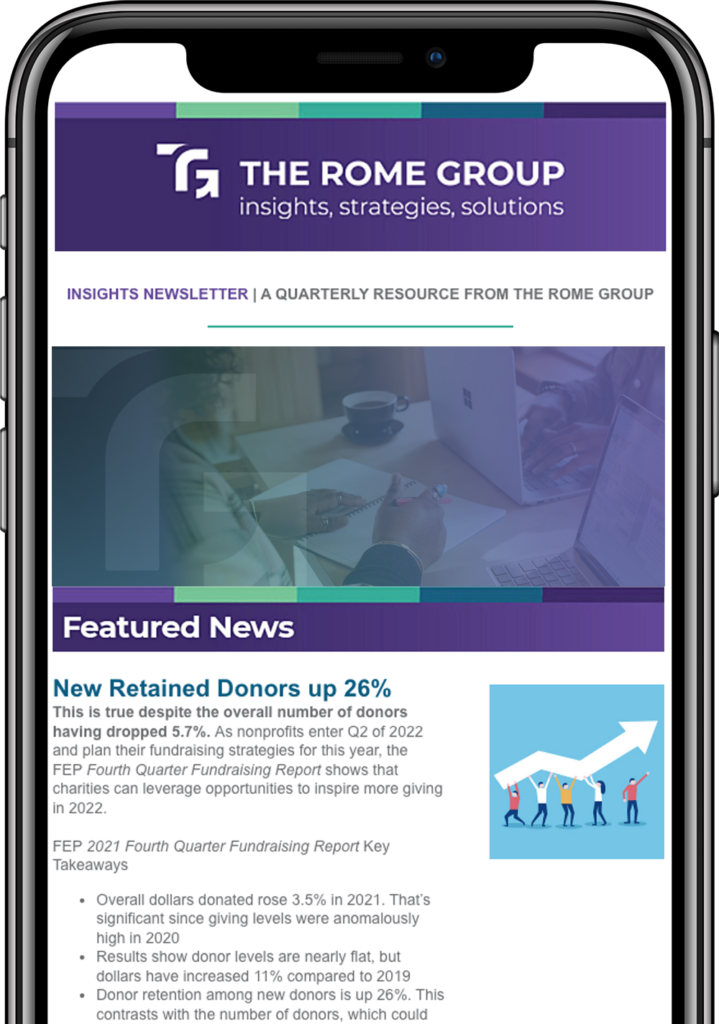By Rachel Broom, MPA, Consultant for Fundraising, Major Gifts
Maria had been staring at the numbers on her computer screen for hours. Finally, she closed her laptop and headed home.
While sleeping that night, Maria dreamed she found a safe hidden in the back of her bedroom closet. She knew the combination by heart, but the stress of the situation was making it impossible for her to remember it. Her mind was racing with thoughts of failure and disappointment. She needed this money to cover payroll that month.
Finally, after what seemed like an eternity, the lock clicked open. She pulled the handle eagerly and opened the door. But to her horror, it was empty. She quickly woke up. She was grateful it was just a dream, yet she knew she had to find a solution to this problem – and soon.
Maria worked for a nonprofit organization that empowers children living in impoverished areas with enriching support programs and educational resources. The next morning, she decided to reach out to one of the organization’s donors, a wealthy individual who had been a longtime supporter.
She made the decision to ask the donor for a significant financial contribution. She prepared a detailed proposal and checked the calendar to make sure he would be volunteering onsite so she could ask him for a gift face-to-face.
However, when Maria presented her proposal to the donor, things did not go as she had expected. The donor listened politely, but then became visibly angry. “I’m sorry, Maria,” the donor said. “I can’t support the organization in this way. I only give money to support specific programs, not for operational expenses.”
Maria was taken aback. She had never encountered this kind of resistance before, and she didn’t know what to say.
The donor continued, “And I also have a policy of only donating when program staff asks for help, not administrators. I prefer to know that my money is going directly to the people who are doing the work on the ground.”
Maria realized that she had made a mistake. She had not done enough research on the donor’s giving history and preferences before approaching him for support. She apologized for her oversight and thanked the donor for his time and consideration.
After the meeting, Maria reflected on what she had learned. She realized that it was important to do more than just ask for money – she needed to build relationships with donors, understand their giving priorities, and tailor her requests accordingly. She also recognized the importance of involving program staff in the fundraising process and demonstrating the impact of their work to donors.
Maria took these lessons to heart and researched ways to improve her organization’s fundraising efforts. She decided it was time to utilize a donor database.
She needed a database to help manage relationships with donors and prospects. A database to use for securely storing information, tracking interactions, reporting donation activity, and recording preferences of likes and dislikes. With this tool, Maria knew she could customize engagement efforts and personalize communications. This would be her secret weapon to help her build stronger relationships with
donors. After all, people like to give to people—not just places or causes. By establishing strong relationships Maria will produce better revenue results (and get a good night’s rest).
==================================================================
Establishing procedures for data entry is critically important for staff to be able to use data to inform fundraising strategies.
So be consistent with data practices, complete the important details in the appropriate fields, confirm you have accurate information, and create a data management manual so multiple or new users can consistently enter data as turnover occurs.
Recording accurate information (addresses, phone numbers, emails) when engaging with constituents helps ensure you can stay in touch regularly. Using custom fields to track additional data to identify and segment audiences will make your donor communications much more personal and
meaningful.
Top Ten Best Practices for Data Management
1. Be Consistent with data practices.
2. Verify information with the donor and Validate data source.
3. Enter Quality Data for accurate reports and personalized communications.
4. Keep Record of Data Entry to produce reports and reconcile finances.
5. Implement Security Measures (set up role-based controls, never share passwords or identity, deactivate old employees, regularly update with patches or plug-ins, and set up firewall protection).
6. Learn Data Privacy Laws to ensure data compliance and to protect personal information stored.
7. Use Automated Tools to remind staff of a donor’s birthday or significant event in their life to strengthen their relationship.
8. Create Data Management Manual for multiple or new users.
9. Follow Established Procedures It is important for all users to follow these procedures for how data is entered, organized, searched, analyzed, and reported to ensure quality standards are used.
10. Keep it Simple & Dependable by letting go of information you won’t use and consistently putting data in the same location of the database.






